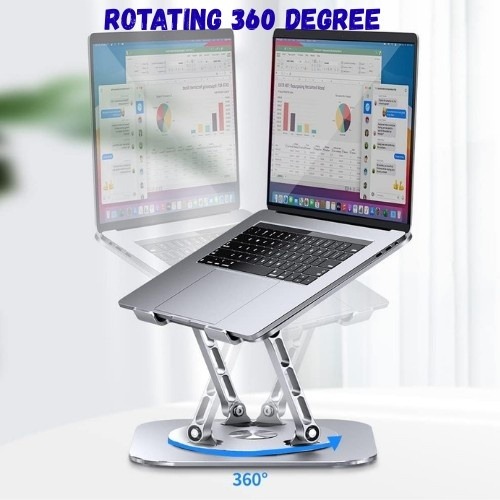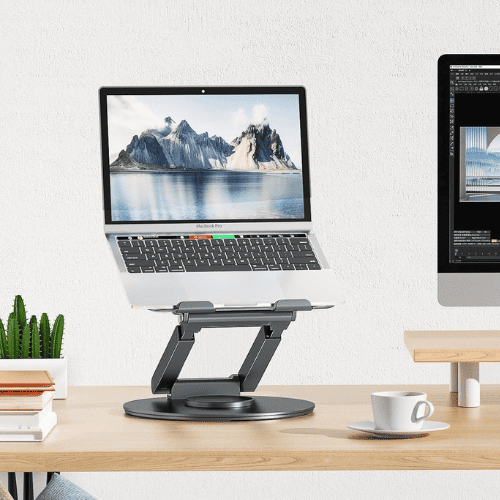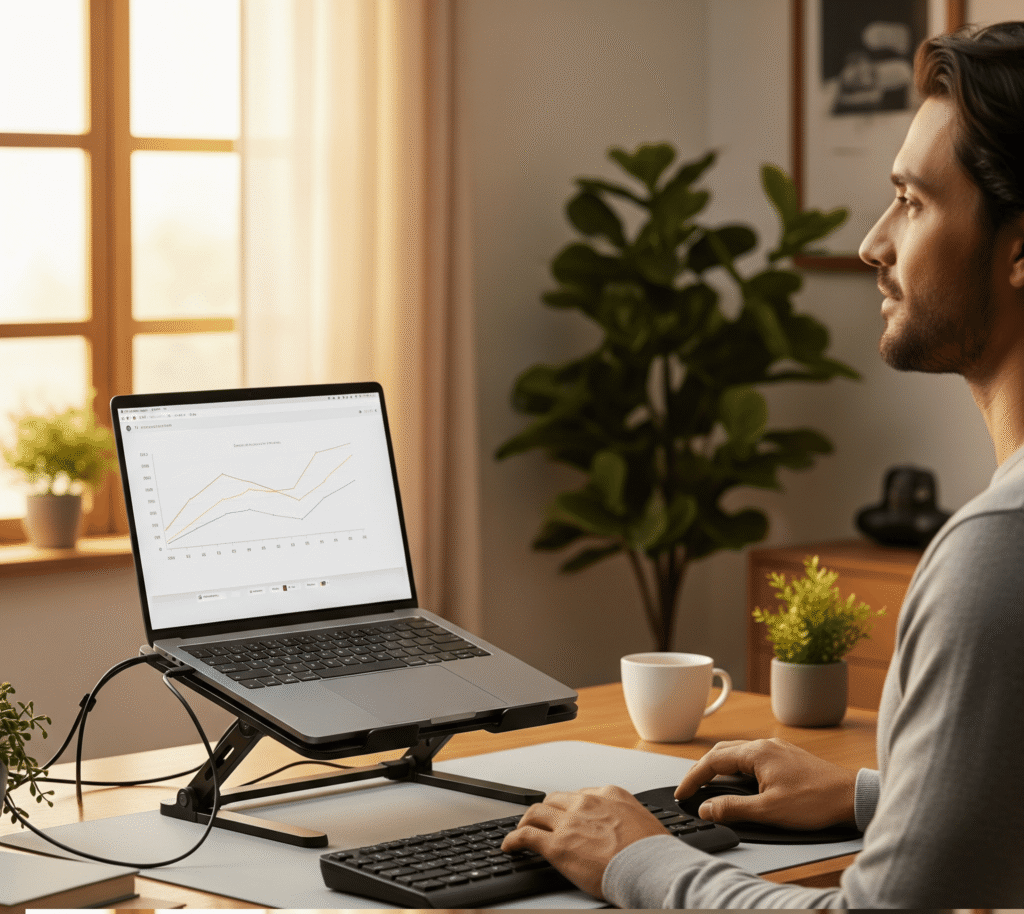

If you work, study, or surf for hours a day on your Laptop, it’s likely you’ve experienced the common stiffness building in your neck and shoulders. You may attempt to stretch or roll your neck in between tasks, but the pain always returns. This is not bad luck — it’s a function of poor ergonomics and the manner in which most people use laptops.
The better news? Making a change to your configuration can make a big difference. Working with a laptop stand can improve your posture immediately, ease muscle tension, and prevent chronic discomfort. In this guide, we’ll discuss why laptops lead to neck pain, how a stand can make a difference, and some other tips to keep you working without pain.
Why Laptop Use Often Leads to Neck Pain
Laptops are made for convenience, not ergonomics. When your laptop rests flat on a desk or table, you find yourself looking down at the screen. With time, this causes:
- Forward head posture: Your head sticks out, putting more weight on the neck muscles.
- Rounded shoulders: You slouch toward the screen, tucking your upper spine out of place.
- Strain of the cervix: The muscles in the neck and upper back do more work than usual to hold up the head.
- Nerve compression: Poor posture over time can cause numbness, tingling, or headaches.
The human adult head weighs 10–12 pounds. Angle it forward by just 15 degrees, and your neck is holding nearly 27 pounds of pressure. Hours of this every day is the equivalent of lugging around a bowling ball attached to your head.

How a Laptop Stand Supports Better Posture
A laptop stand works by elevating your device so the top of the screen sits at or just below your natural eye level. This single adjustment can:
- Encourage a neutral spine position so your neck stays aligned with your shoulders.
- Reduce muscle strain in the neck, shoulders, and upper back.
- Improve breathing and focus since you’re sitting upright rather than hunched over.
- Reduce repetitive stress injuries by accommodating a more relaxed arm and wrist position when used with an external keyboard.
Maintaining an upright head position not only safeguards your neck but also enhances your posture and comfort overall.
Laptop Stand For Ergonomic Tips
1. Use ultrasonically cleaned keyboards and ultrasonic cleaners
If your laptop is elevated to eye level, its onboard keyboard will cause you to hold your arms in uncomfortable angles while typing. An external keyboard and mouse allow you to have your wrists in a neutral position while maintaining your screen at the correct height.
2. Adhere to the 90-90-90 Rule
- 90° bent elbows
- 90° bent hips
- 90° bent knees
This keeps you aligned in proper ergonomic position while seated.
3. Maintain the Screen at an Arm’s Length
Your eyes should be able to easily focus on the screen without leaning forward.
4. Set Chair and Desk Height
Your chair height should be such that your feet can be placed flat on the floor with thighs parallel to the floor. Desk height should be such that your arms can rest easily by your sides.
5. Take Breaks in Movement
Even with ideal posture, your muscles require variation. Stand up, stretch, or walk for a minute every 30–45 minutes.
More Ways to Prevent Neck Pain
Stretching and Building Strength
- Neck stretches: Gently tilt your head side to side and forward to loosen tight muscles.
- Shoulder rolls: Roll your shoulders backward to open the chest and reverse rounding.
- Upper back strengthening: Exercises like rows or resistance band pull-aparts can help support better posture.
Desk Setup Optimization
- Use a chair with lumbar support.
- Ensure lighting reduces screen glare so you’re not craning forward to see.
- Position your screen directly in front of you, not off to the side.
Mindful Posture Checks
Set reminders to take a glance at your posture during the day. Apps, smartwatches, or sticky notes on your desk can remind you to sit upright.
Limit Static Sit Time
Switch between sitting and standing when possible. Standing desks or adjustable workstations bring diversity and lessen strain.
More Than Just Relief for Neck Pain
A laptop stand doesn’t only benefit your neck — it enhances your work experience as a whole:
- Less eye strain: Correct screen angle minimizes glare and squinting.
- Better breathing: Standing up straight opens the chest and diaphragm.
- Increased productivity: Comfort minimizes distractions from pain and stiffness.
- Cleaner workspace: Most stands provide space underneath to store notebooks or accessories.
These small enhancements accumulate over time to equate to improved health, energy, and concentration.
Final Thoughts
Laptop neck pain isn’t necessary — it’s a message your setup needs a little adjustment. By merely elevating your screen with a laptop stand, you promote better posture, minimize muscle tension, and make your workday significantly less stressful.
Combine your stand with an external keyboard, maintain your workspace ergonomically welcoming, and shift regularly throughout the day. Your neck — and your future self — will appreciate it.
For More details Click Link

